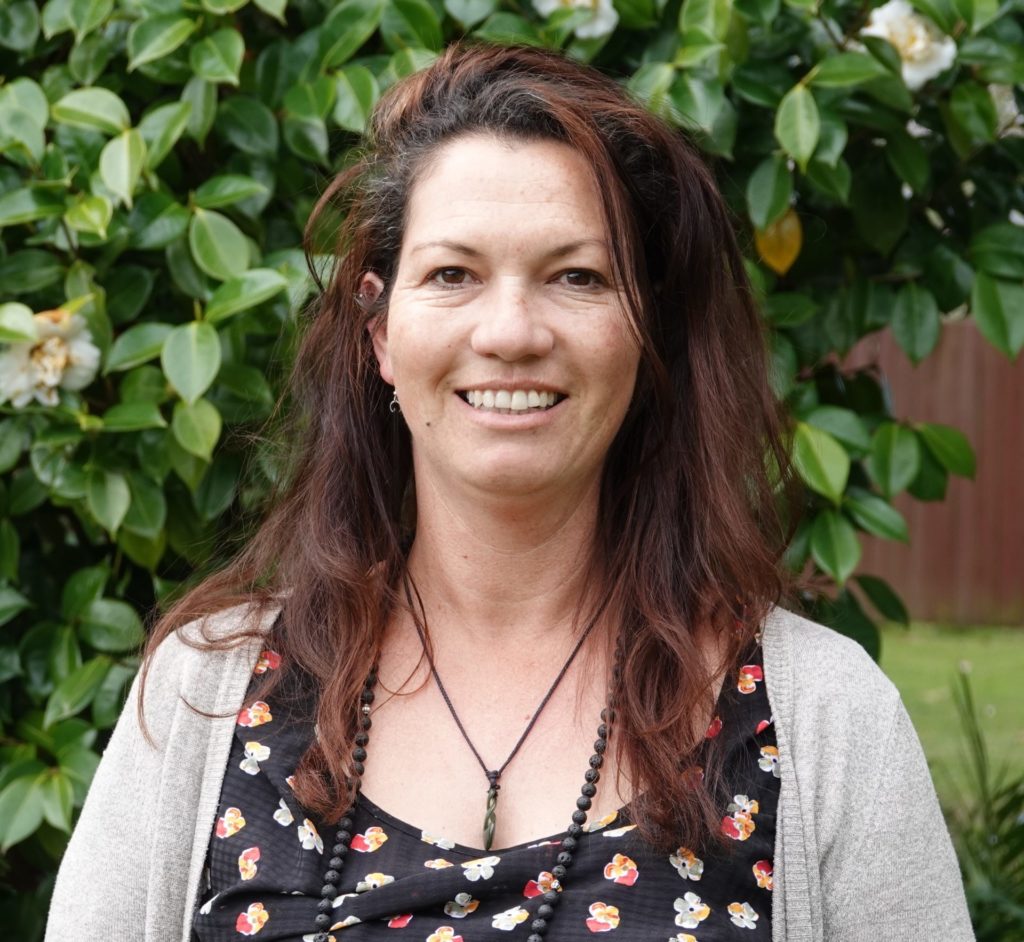Host, Pathogen & Environment
Looking at the role environmental factors play on disease expression and severity, pathogen spread and establishment, as well as investigating plant pathogen genomes.

At A Glance:
This research theme is focusing on the ‘disease triangle’: host susceptibility, the pathogen and the right environment for disease expression.
Plants and pathogens can both be influenced by a number of factors such as disturbance, topography, weather, soil type and pest control. These factors can, in turn, affect how the plant pathogens adapt to New Zealand’s environment.
Our team are investigating the role environmental factors play on disease expression and severity, as well as researching the pathogen genomes. The knowledge we gain will contribute to improving surveillance, control, management and conservation efforts, and we hope to discover new ways to mediate these diseases.
We are testing an innovative kaupapa Māori programme known as Te Whakahononga in this theme. This provides the mechanism for linking scientists to mana whenua in affected kauri and myrtle ngāhere, while enabling mana whenua to lead field work in their rohe and apply mātauranga based assessments of ngahere health and relationships.
Research Areas:
Te Whakahononga (linking relationships)
All Ngā Rākau Taketake (NRT) research requires the integration of mātauranga Māori and kaupapa Māori approaches and activities. However, this runs the risk of overlapping across ‘themes’ – duplicating effort and engagement with mana whenua.
To avoid this problem, NRT Māori co-leads have developed a cross-cutting programme to provide for appropriate and robust engagement, in which mana whenua have a clear partnership stake.
The programme is responsible for several pieces of work:
- Cultural authority arrangements
- Rohe-based Biological Management Areas (BMAs) and Data Information and Taonga Platforms
- Ngahere Health Indicator frameworks
- Cultural Impact Assessment templates
- A hui/wānanga schedule and establishment of Reflexive Monitors Kahui (tohunga, kaumatua, mātauranga experts).
Within the Host, Pathogen & Environment workstream we are particularly interested in the effects of climate change on kauri, and what these effects mean for kauri infected with kauri dieback. To learn more about this we are partnering with mana whenua in BMAs, a number of whom have previously been involved with the Healthy Trees, Healthy Futures programme (led by Scion).
Koanga/Tipu o te kauri
In this workstream we are looking at the effects of temperature, bird song and wind on tipu (bud burst) and radial growth. We will train kaitiaki from across the motu (country) to record growth and events such as bud burst in a consistent way. We can then compare this data with temperature and get a clearer idea of how climate change across the country is affecting our kauri.
We are also planning on repatriating some of our taonga kauri seedlings which are currently stored in Rotorua. We will plant them out in their rohe and monitor their growth in situ. This will align closely with the Tohu O Te Maramataka project.
Role and epidemiology of Phytophthora
This research team are establishing long-term monitoring sites to track the rate of Phytophthora agathidicida spread. This includes how it spreads through the soil – eventually across the landscape – and between cells within each kauri tree.
This information will tell us more about the vectors that can transport the pathogen around a forest. It will show us how long it takes between a tree getting infected and becoming sick, as well as provide more details about the different stages of illness.
We will also be looking at the role of other Phytophthora species in kauri decline.
Austropuccinia psidii epidemiology
The pathogen that causes myrtle rust is a fungus and spreads through the air, so the patterns of infection are very different to kauri dieback (which spreads through the soil).
In this workstream we are using field monitoring, experimentation and mathematical modelling to understand how myrtle rust spreads within the entire forest system, throughout the year.
How does the pathogen spread from one plant to another? When will new growth appear on the plant, making it susceptible to infection? These are the types of questions we need answers to, to be able to predict how myrtle rust will spread across Aotearoa and target our management accordingly.
This information will allow us to develop tools, information resources and control methods to help affected people better understand what is going on with myrtle rust in their ngahere.
Deciphering the blueprint of a kauri killer
This research team is using a new, high-quality P. agathidicida genome sequence, together with existing and new gene expression data, to discover how the pathogen:
- finds and attaches to its host
- invades the host and causes disease symptoms
- responds to other plants in the environment
This information will open doors to new ideas for disease control and will help in the fight to save our kauri.
Targeting Austropuccinia psidii effectors
An effector protein allows the pathogen to enter the cell of its host and suppresses the host’s immune response. This research team is expressing and purifying the effector proteins from A. psidii, which will enable us to look their structure and specific function. We will then be able to determine the receptor proteins in host plants.
This information will help to develop new, targeted ways of controlling the spread of A. psidii and the disease it causes, myrtle rust.

Highlights so far
- In collaboration with Auckland Council and Te Kawerau a Maki, we have now processed ~ 800 soil samples from the Waitākere Ranges 2021 surveillance programme.
- We have identified a possible long-term monitoring plot within the Matuku Reserve, Waitākere Ranges.
- During the summer of 2020/2021 we identified that warm winter temperatures allowed myrtle rust to continue infecting plants throughout winter, particularly in more northern areas. This indicates that a warming climate will increase the future risk of myrtle rust to Aotearoa.
- We have implemented the climatic risk model, allowing public access to myrtle rust weather risk information.
- We have assembled a new, high-quality Phytophthora agathidicida genome. This will allow us to progress our understanding of both the pathogen and the disease it causes.
- We have expressed and purified the first Austropuccinia psidii effector. This will progress our understanding of how myrtle rust occurs and help find new strategies to stop its spread.
Co-leads:


Plant and Food Research
Other key people:
- Dave Milner – Ngāti Wai, Ngāti Whatua, Ngāpuhi, Ngāti Porou; Perception Planning Limited
- Waitangi Wood – Ngatirua, Ngāti Awa, Ngāti Kahu, Ngāpuhi Nui Tonu
- Dr Gancho Slavov – Scion
- Dr Ian Horner – Plant and Food Research
- Dr Rob Beresford – Plant and Food Research
- Dr Rosie Bradshaw – Massey University
- Dr Grant Smith – Plant and Food Research
Students
Tyler Johns – University of Canterbury Honours student
News
November 2022
‘Instruction manual’ to kauri dieback pathogen uncovered. Radio New Zealand.
May 2021
Myrtle rust found in Christchurch for the first time. TVNZ One News.
Myrtle rust found in Christchurch, more expected in region. Radio New Zealand.
Established myrtle rust case discovered in Christchurch for first time. Stuff.
April 2021
Myrtle rust found on mānuka seeds. Radio New Zealand.
Myrtle rust in mānuka concerns researchers. Farmers Weekly.
January 2021
Newly-found myrtle rust putting Waitakere Ranges at risk. Newshub.
2020
Trans-Tasman collaboration unlocks genetic secrets behind myrtle rust. Manaaki Whenua – Landcare Research.
Publications
- Austropuccinia psidii, causing myrtle rust, has a gigabase-sized genome shaped by transposable elements. Peri A Tobias, Benjamin Schwessinger, Cecilia H Deng et al. 2021.
- Susceptibility of native New Zealand Myrtaceae to the South African strain of Austropuccinia psidii: A biosecurity threat. Julia Soewarto, Chanatda Somchit, Esna du Plessis et al. 2020.
Research Partners
- Te Kawerau a Maki, Te Roroa, Patuharakeke, Ngāti Rehia, Ngāti Ranginui/Tauranga Moana, Ngāti Tamateatutahi, Ngāti Kawiti, Ngāti Rua, Te Uri o Hau, Ngāti Huarere ki Whangapoua
- Plant and Food Research
- Scion
- Department of Primary Industries and Regional Development, Australia
- Murdoch University
- USDA Forest Service
- Auckland University of Technology
- Victoria University of Wellington
- Massey University
- University of Canterbury
- Colorado State University
- Department of Conservation
- Auckland Council
- IUFRO Phytophthora working party and OMGN network
- HortPlus Ltd
- Department of Agriculture and Fisheries, Queensland, Australia
- Department of Primary Industries, New South Wales, Austalia
- IUFRO myrtle rust consortium
Find out more about myrtle rust research in Aotearoa: